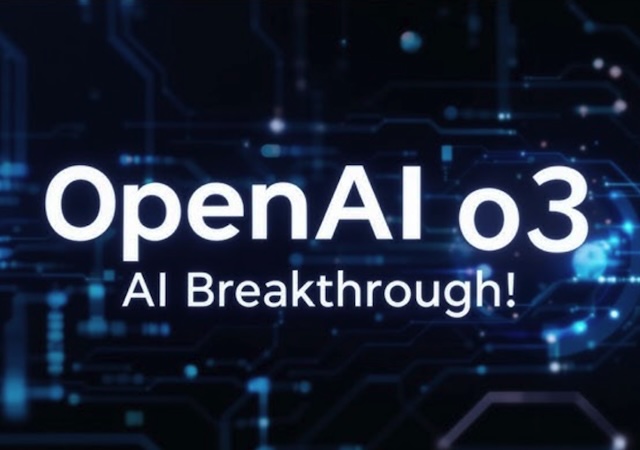December 26th, 2024
AI OpenAI
In a groundbreaking announcement, OpenAI has introduced its latest innovation, O3, alongside significant advancements in the pursuit of Artificial General Intelligence (AGI). Building upon the foundation of its predecessor models, O3 represents a considerable leap forward in the capabilities and potential applications of AI technology.
O3: The Next Generation in AI Models
O3, which stands for OpenAI's third iteration in its model series, brings with it enhancements that mark a notable upgrade over its predecessors. Key features include improved language understanding, more efficient processing capabilities, and a revolutionary approach to model architecture that allows for greater adaptability across a variety of tasks.
One of the most significant advancements with O3 is its improved ability to understand and generate human-like text, making interactions with AI more seamless and natural. This development is achieved through a combination of innovative training techniques and a more nuanced model design that mimics human cognitive processes more closely than ever before.
Furthermore, O3's architecture is designed to be more modular, allowing developers and researchers to customize its components for specific applications without compromising on performance. This flexibility holds immense potential for industries ranging from healthcare to finance, where bespoke AI solutions can transform operations and decision-making processes.
Advancements in AGI: Paving the Path to Human-Level AI
In tandem with O3, OpenAI has made strides in its journey toward AGI—a level of artificial intelligence that can understand, learn, and apply knowledge in a manner akin to human intelligence. This latest development brings a more cohesive and comprehensive understanding of different knowledge domains, enabling the AI not just to perform tasks but to autonomously improve and innovate solutions.
OpenAI's progress in AGI is characterized by enhanced machine learning algorithms that allow the AI to undertake more complex reasoning and learning tasks. The AI can better bridge gaps between disparate types of data and infer new information, showing early signs of cross-domain capabilities crucial for AGI.
Moreover, OpenAI emphasizes a commitment to safety and ethics in these advancements. As the AI becomes more capable, ensuring alignment with human values and implementing robust safety protocols remains a primary focus area. OpenAI continues to work closely with global regulatory bodies and ethicists to develop frameworks that safeguard against potential misuse or unintended consequences of increasingly powerful AI systems.
Implications and Future Prospects
The release of O3 and ongoing AGI advancements signal a pivotal moment in AI development. Enterprises can expect a broad array of applications, from automated customer service to predictive analytics, where AI can significantly enhance productivity and innovation.
However, as AI systems grow more sophisticated, so do the complexities of their deployment and regulation. OpenAI's continued engagement with policy-makers, industry leaders, and the public is crucial in managing both the technical and ethical challenges that these technologies present.
As eyes turn towards the future, OpenAI's latest developments underscore the dual promise and responsibility that come with building the next generation of intelligent machines. With O3 and its ongoing AGI initiatives, OpenAI not only pushes the boundaries of what's possible but also sets a precedent for how these advancements should be guided and governed. The journey towards AGI is as much about technological innovation as it is about reimagining the potential for human and machine collaboration in the years ahead.